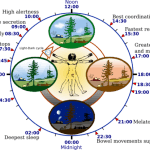

Sleep Assessment Tools List
There are few sleep assessment tools that can be used at home.
Snore Microphone
This is one of the few sleep assessment tools that can be used outside the hospital setup. Snoring is a loud noise that occurs when the airways are blocked. It is one of the main symptoms of sleep apnea. Getting to know how loud the snoring is can help to determine the magnitude of the sleep apnea.
Snore microphones as sleep assessment tools are easy to use and do need a prescription. They are cheap and easily available in most electronic shops. To capture most of the sound, you are advised to fix the snore microphone near the nose. These sleep assessment tools are set to capture sound of up to 1000Hz. When told that they snore, most snorers are hesitant to accept. Snore microphone can be used to prove snoring and thus encourage the patient to get treatment.
Snore sensor
Snore sensors are used for more or less the same reason as snore microphone. However, they work a bit differently. While snore microphones depend on sound to measure snoring, snore sensors depend on the vibrations produced by the snore. These sleep assessment tools are placed on the neck. Sleep sensors have the following disadvantages:
- The quality of their result is poor for people who are obese (have a big neck).
- Sleeping position affects the quality of vibration and thus results.
Electromyograph
Electromyograph is one of the sleep assessment tools used to measure muscles activity. During sleep, muscles activity is low due to a phenomenon known as atonia – muscle paralysis. Atonia not only enhances sleep but also ensure that you do not act out your dreams. Most people who experience parasomnias usually have increased muscle activity during REM.
Elecromyograph sleep assessment tools are only found and used in a lab set up. The result produced by elecromyograph is called elecromyogram and is only useful in the hands of a sleep expert.
Electroencephalograms
Sleep assessment tools used to measure brain activity during sleep. Though lower than during wakefulness, there is usually some brain activity during sleep especially in the REM stage of sleep. In some sleep disorder especially parasomnias, brainwave activity is so high. In fact, it can be similar to brainwave activity experienced during wakefulness.
Disease that can be diagnosed using Electroencephalograms:
- It is used to confirm and classify epilepsy.
- Useful in assessing dementia.
- Assessment of narcolepsy.
- Determine response to drugs used to treat epilepsy.
Electrooculogram
Eye movement during sleep is very important in sleep studies. In fact, based on eye movement, the stages of sleep are classified into 2 stages: Rapid Eye Movement (REM) and Non Rapid Eye Movement (N-REM). Consequently, Electrooculogram are helpful in determining the stage of sleep that is most affected by sleep disorder. Electrooculograms are sleep assessment tools used to determine the level of eye movement during sleep.
Other Sleep Assessment Tools
- Nasal Airflow sensors.
- Electrocardiogram.
- Questionnaires.
